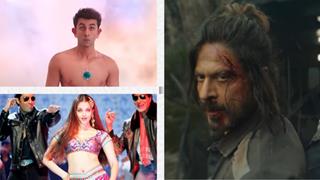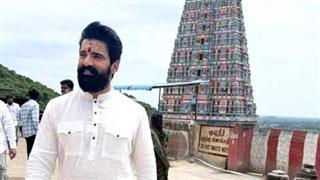Director: Rishab Shetty
Rating:***½
Kantara: Chapter 1 rewinds and widens the world introduced in the 2022 original, diving into the origins and myths that shaped the village’s beliefs and conflicts. The film balances intimate folk moments with large-scale set pieces — ritual, revenge and cosmic superstition are all threaded together to explain how legends harden into law.
What works - performances & characters
Rishab Shetty pulls double duty as both lead and creative engine; his physicality and lived-in portrayal anchor the film’s emotional core. Supporting actors (including familiar faces from the Kantara universe and notable additions) complement Shetty with grounded performances that sell both small human stakes and sprawling mythic menace. The emotional beats land because the actors commit fully to the world-building - they treat the local customs not as exotic props but as lived reality.
Direction, screenplay & world-building
Shetty approaches the prequel as world-expansion rather than mere fan service. The screenplay often slows to let ritual and landscape breathe - sometimes to electrifying effect, sometimes at the cost of mid-film momentum. The strongest sequences are those where small, local actions ripple into larger consequences; Shetty’s writing leans on folklore logic, which makes the film feel like a myth being shown rather than explained. Critics and early viewers noted the film’s confidence in expanding the original’s lore.
Visuals, action & sound design
Cinematography and production design are major draws: the movie stages several large, visceral action set pieces and ritual sequences that are framed to look operatic. Costume and set detail sell the period/folk texture, while editing choices in action scenes favour clarity and impact. Early reports and reviews praise its sound and score for elevating tension and ritual drama (and the trailers already spotlight the film’s heavy, drum-led visuals).
Themes & cultural resonance
Like the 2022 film, Chapter 1 interrogates the friction between community tradition and outside pressures, and how belief can be both protective and destructive. The film again leans on regional performance traditions (ritual dance and spirit possession) to explore agency, memory and land - which gives it a culturally specific heartbeat that also fuels its universal stakes. Given how the original influenced conversations about folk arts and policy, the prequel feels positioned to deepen that cultural conversation.
Pacing & criticisms
The primary criticisms are structural: the film’s appetite for detail occasionally slows the story, and viewers expecting a straight action roller-coaster may find stretches of exposition and ritual contemplative. A second critique is familiarity - because it revisits motifs from the original, some surprises are less surprising. That said, these are often production choices meant to prioritize atmosphere and myth over brisk plot mechanics.
Verdict - Who should watch it?
If you loved the original Kantara for its cultural texture, raw performances and the way it turned ritual into narrative drive, Kantara: Chapter 1 will likely satisfy and expand your appreciation. It’s best experienced theatrically for the sound-and-vision punches. If you want a fast-paced, plot-first blockbuster, prepare for a film that sometimes chooses atmosphere and mythic resonance over breakneck pace.




















